YOU ARE LEARNING:
Rules of Angles

Rules of Angles
Acute, obtuse, reflex and right-angles include some important rules relative to each other, which we can use to find unknown angles.
Angles can be either acute, right-angled, obtuse or reflex. This depends entirely on the size of the angle.
Rules of angles
An acute angle is any angle that is less than 90°
Here is an example
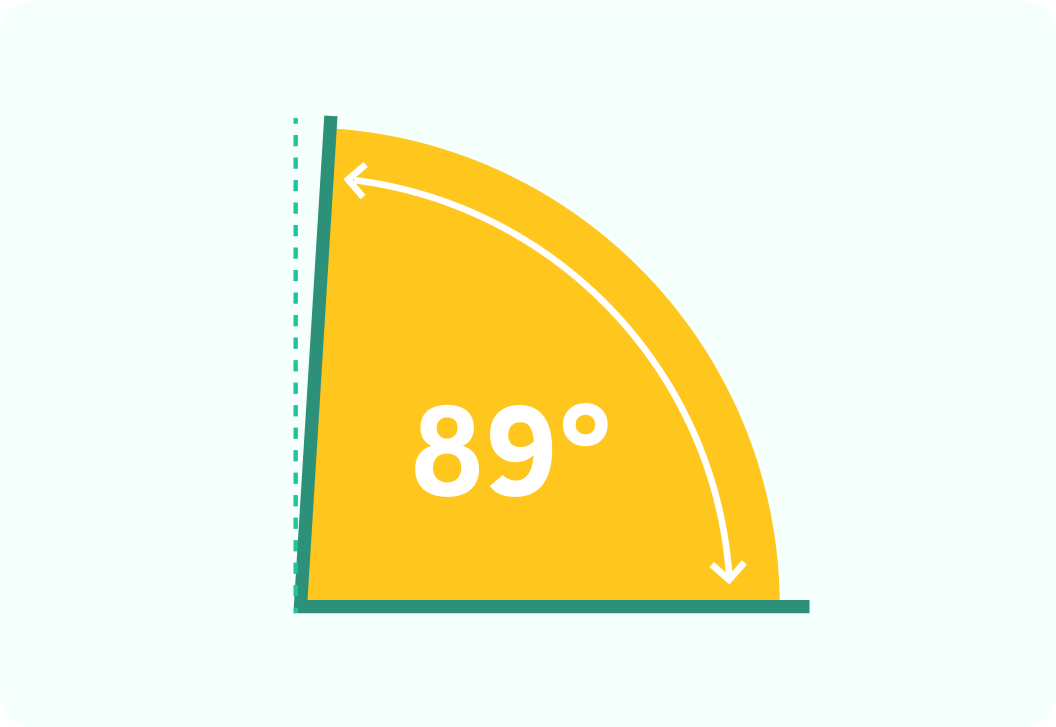
A right angle is exactly 90°
We indicate a right-angle with a little square at the angle.
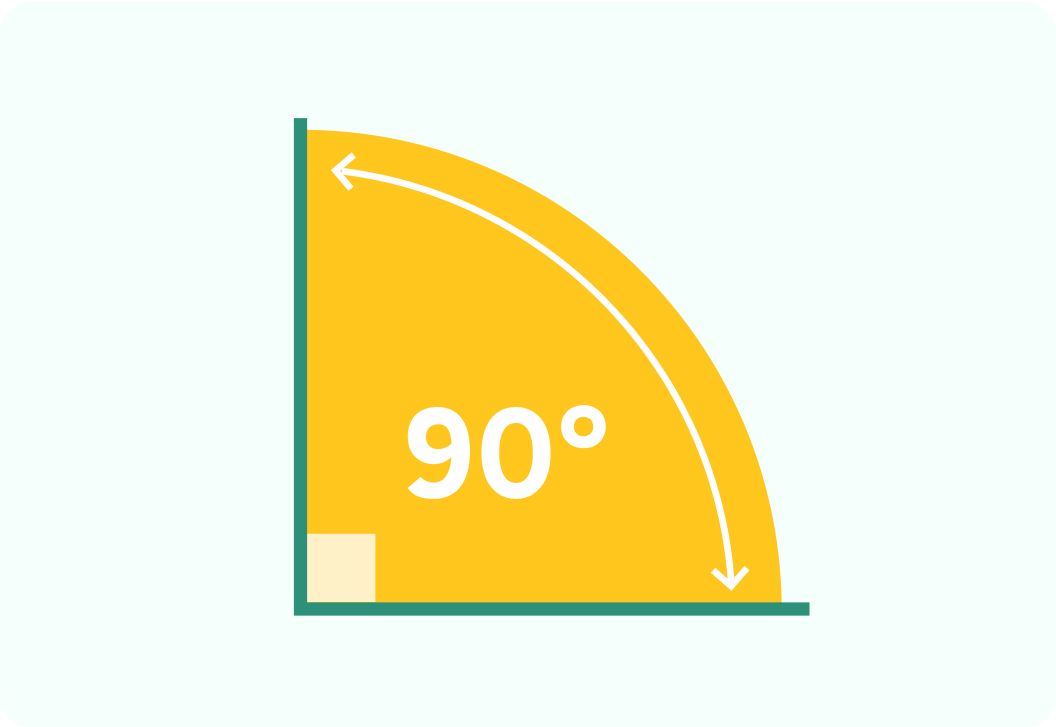
What type of angle is this?


An obtuse angle is between 90° and 180°
Both these angles are obtuse
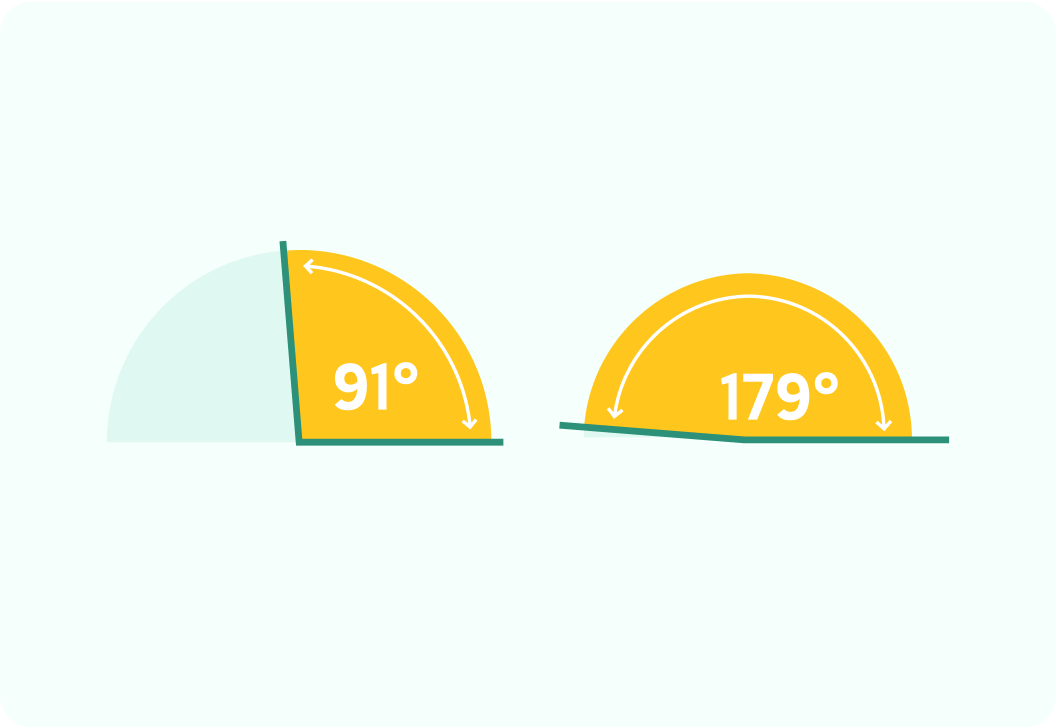
A reflex angle is greater than 180°
Both these angles are reflex angles
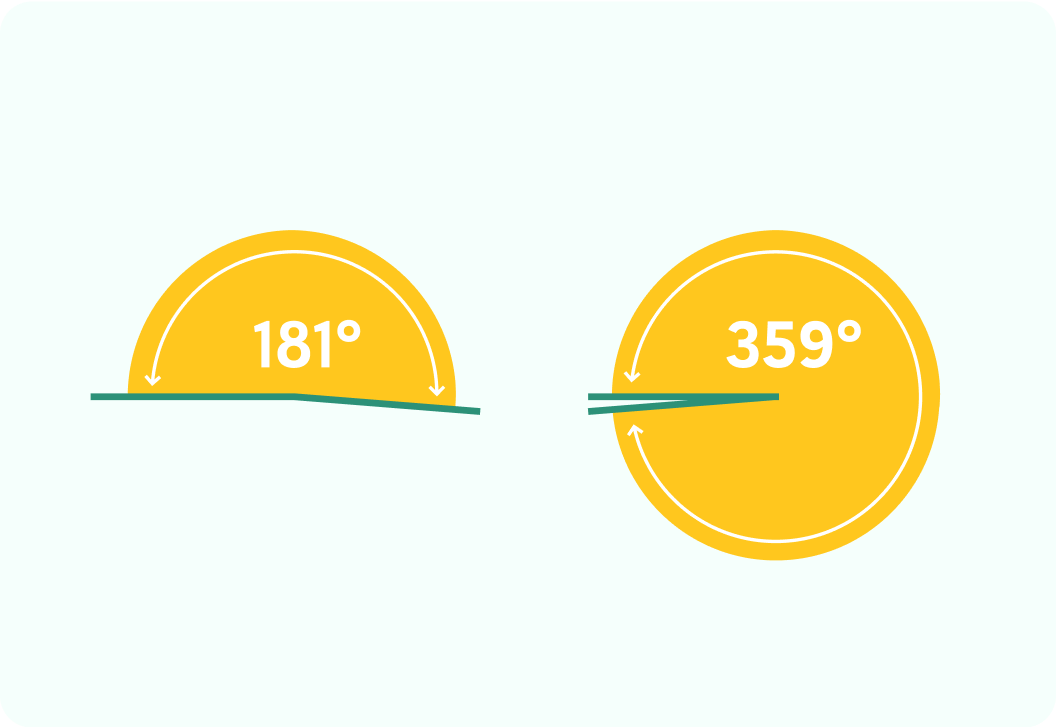
What type of angle is this?


This is a reflex angle
We can see this because the angle is greater than 180°

What type of angle is this?


This is an obtuse angle
This is because the angle is between 90° and 180°

There are 3 really important rules to remember about angles.
Rules of angles: lines, circles and triangles
The angles on a straight line add up to 180°
No matter what the two angles are, they always add up to 180°

What is the value of angle B? Write the number of degrees.


Angles around a point add up to 360°
No matter how many angles there are, they all add up to 360°
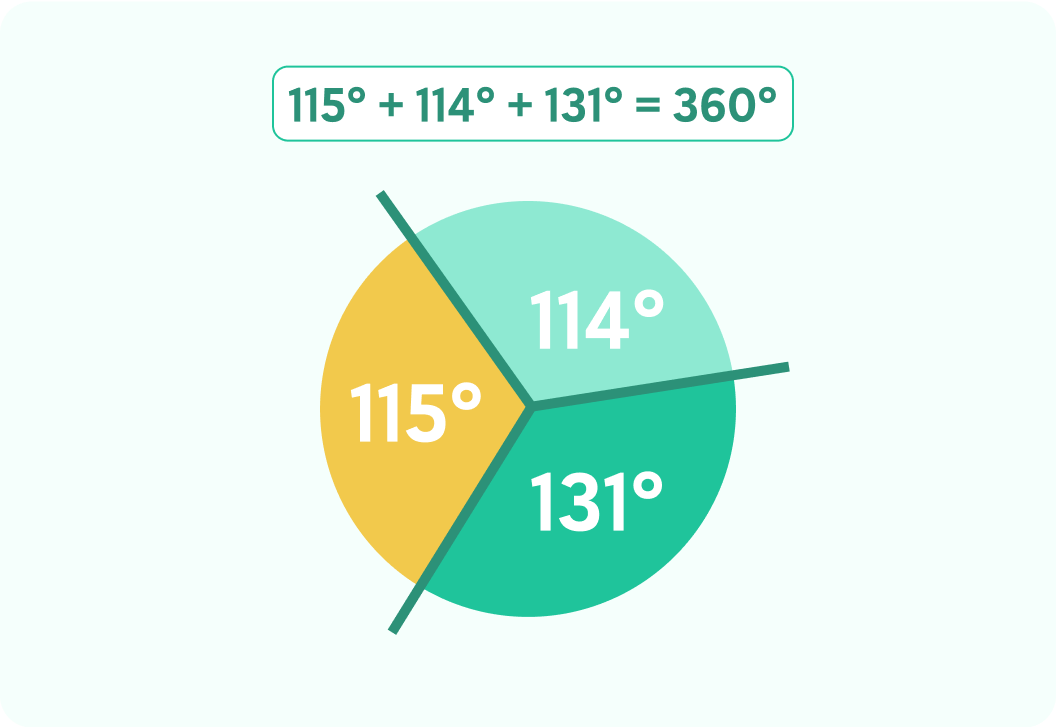
What is the size of Angle A? Write the number of degrees

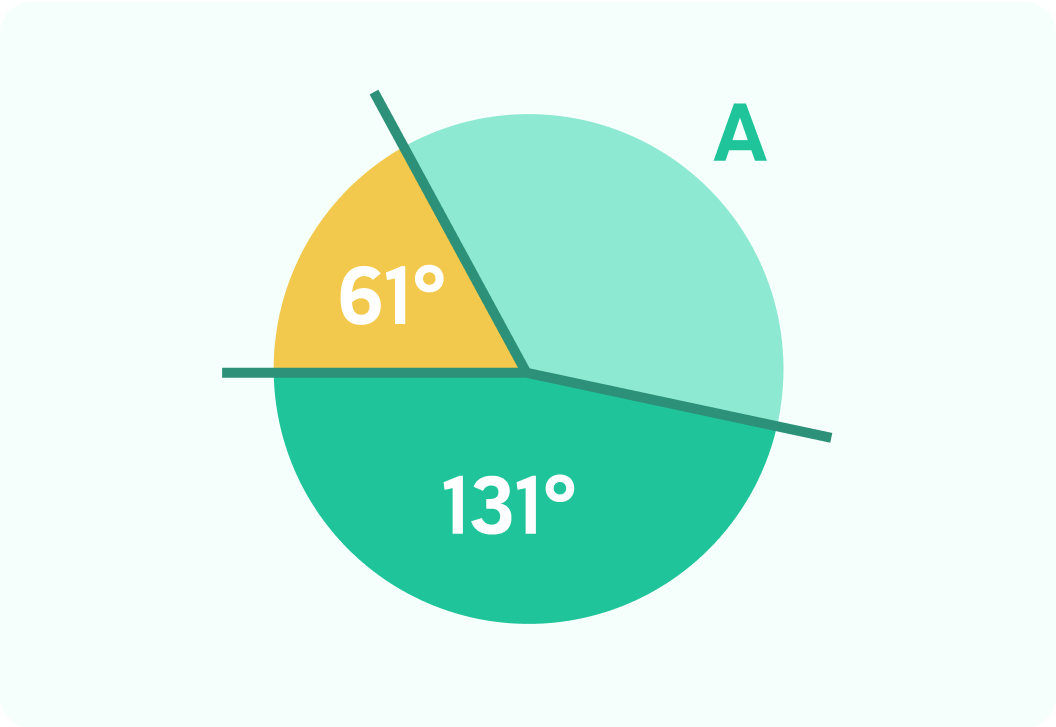
The interior angles of a triangle add up to make 180°
Have a look in this triangle to see for yourself

What is the value of angle A? Write the number of degrees.

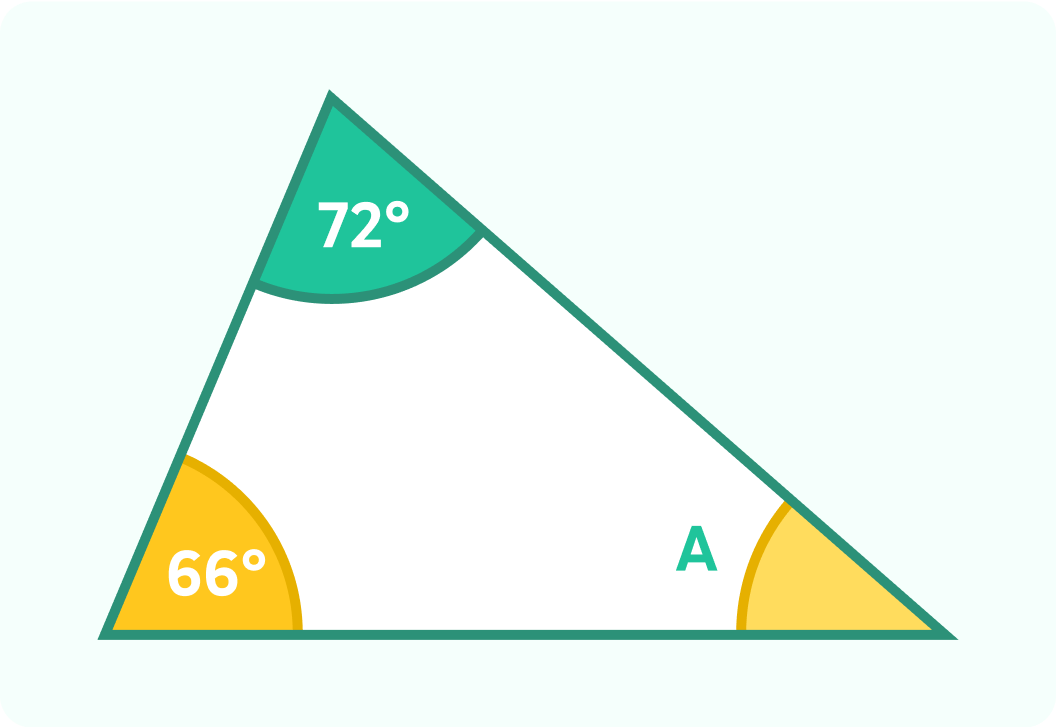
The angles around a point add up to ____

Final question! Which of these definitions describes the sum of the angles in a triangle?

